Proving Engineering Savvy with a Cup and a Backpack
For National Engineers Week, we’re featuring Chris Bigler who addressed a challenge on a Sierra Space vehicle using common everyday objects.
February 22, 2024
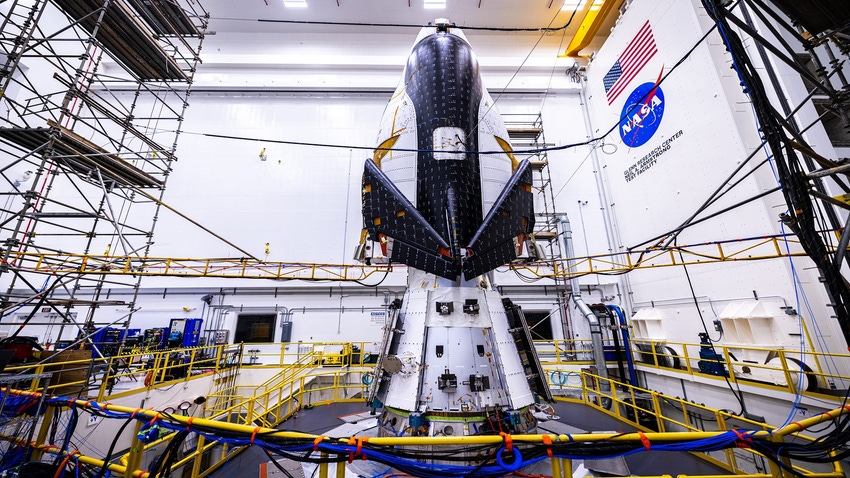
At a Glance
- Solving engineering problems with everyday objects
- National Engineers Week
- Building Sierra Space's Dream Chaser
Engineering thinking is the most important tool in the engineer’s toolkit. Chris Bigler, structural design engineer III at Sierra Space, solved an engineering challenge on the Dream Chaser space vehicle by using a cup and a backpack to begin the prototyping process.
The Dream Chaser’s forward separation barrier was first implemented due to a requirement to not allow anything to exit the uncrewed spaceplane after cargo module separation. It had to be installed and stowed by a single crew member without the need for any tools. A drawstring is pulled to deploy the forward separation barrier and it keeps all articles inside the cargo module.
"After playing with some ideas, I realized that I was given a drawstring backpack for onboarding at Sierra Space,” Bigler told Design News. “I cut it apart, grabbed a cup from the office kitchen and stapled a portion of the fabric into the front to approximate the conic shape of the cargo module and what the barrier could look like.” After an initial proof of concept, Bigler went to work making a full-scale mockup test stand to iterate designs.”
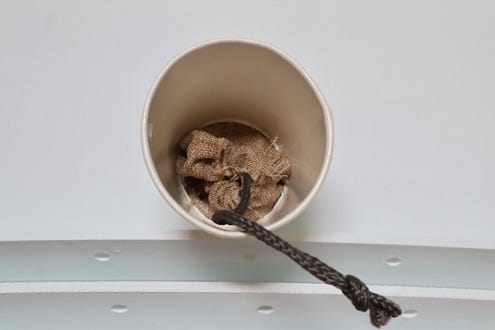
Photo of cup mockup for forward separation barrier made out of drawstring from bag. Image courtesy of Sierra Space
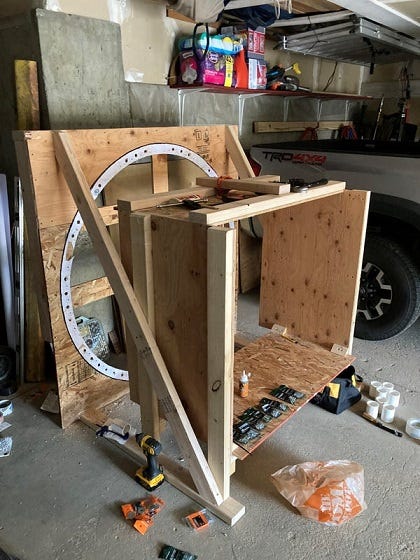
The forward barrier mockup and eventual ISS Crew Training unit being built in Chris's garage. This is what Chris used to test potential designs and effectivity for Crew interaction. Mockup includes an approximate flight like bolt pattern for the FWD Barrier and flight like Cargo Tunnel to approximate crew confinement during on orbit operations. Unit also included a top cross bar with opening so that Chris could don a climbing harness and "float" in the Cargo Tunnel to ensure applicability to Crew members floating through the Cargo Module. Image courtesy of Sierra Space.
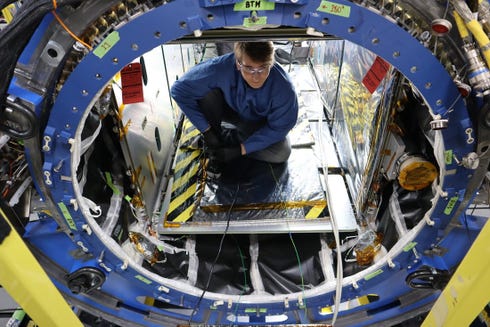
Chris sitting in the forward end of the Shooting Star Cargo Module after successful installation, testing, and stowage of the flight Forward Separation Barrier. Image courtesy of Sierra Space
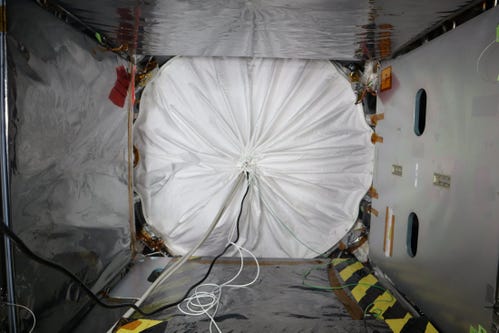
Deployed Forward Separation Barrier as seen from the inside of the Shooting Star Cargo Module, looking towards Dream Chaser Tenacity. Image courtesy of Sierra Space.
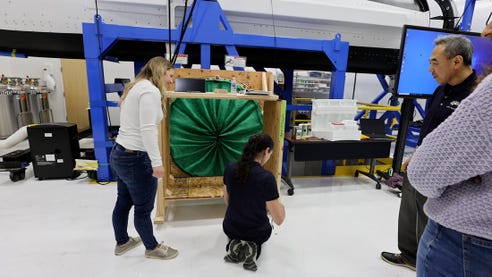
Sierra Space compiled an eight-hour training session that took place on March 7 at the company’s Louisville, Colorado facility. Company specialists conducted the training, which was divided into four sections. Parts 1 and 2 were classroom training, while Parts 3 and 4 involved a full-size mock-up of Dream Chaser. Image courtesy of Sierra Space
The final design for the forward separation barrier was made from a single continuous strip of Nomex fabric that is woven similar to RipStop fabric. The goal is to prevent anything from escaping or cutting through. It can stow inside of itself using a Velcro product that is space rated. “We now use the mockup as the trainer for astronauts, that will potentially be aboard the ISS when Dream Chaser arrives for its first mission in 2024,” said Bigler.
Early Engineering Beginnings
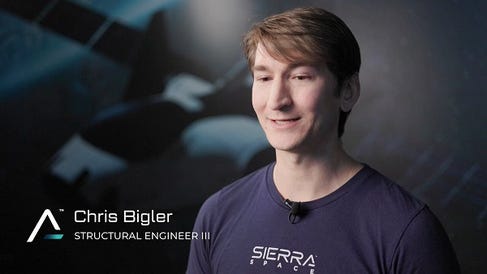
Image courtesy of Sierra Space
Bigler showed signs of engineering prowess when quite young. “I took apart everything, things that was broken and things that weren’t broken,” said Bigler. “I grew up with a dad who worked at Lockheed Martin. I went to site visits with him so I could experience engineering, and when I had choices of classes, engineering classes were the most fun. I like solving problems. Spatial thinking came easy for me.
After learning CAD in high school, Bigler went on to Colorado State University in Fort Collins to earn a degree in mechanical engineering.
As for seeking engineering solutions using common objects, it comes natural for Bigler. He notes that he often seeks solutions to engineering challenges by utilizing off-the-shelf products and materials. “It’s good to go with off-the-shelf products,” said Bigler. “If you can take something that already exists for part of your solution, you get to spend your time focusing on the harder problems. Innovation is great but plagiarism is cheap. It’s best to be simple. The best designs have the simplest solutions in most cases.”
Getting Right with NASA
Sierra Space recently achieved a major milestone in the development of the first commercial space station. The first Ultimate Burst Pressure test of our full-scale LIFE structure at NASA Marshall Space Flight Center exceeded NASA's recommended x4 safety levels by 27%. The article was one third the volume of the International Space Station and will be an integral part of future commercial space destinations.
Here's some background on the Dream Chaser:
About the Author(s)
You May Also Like





